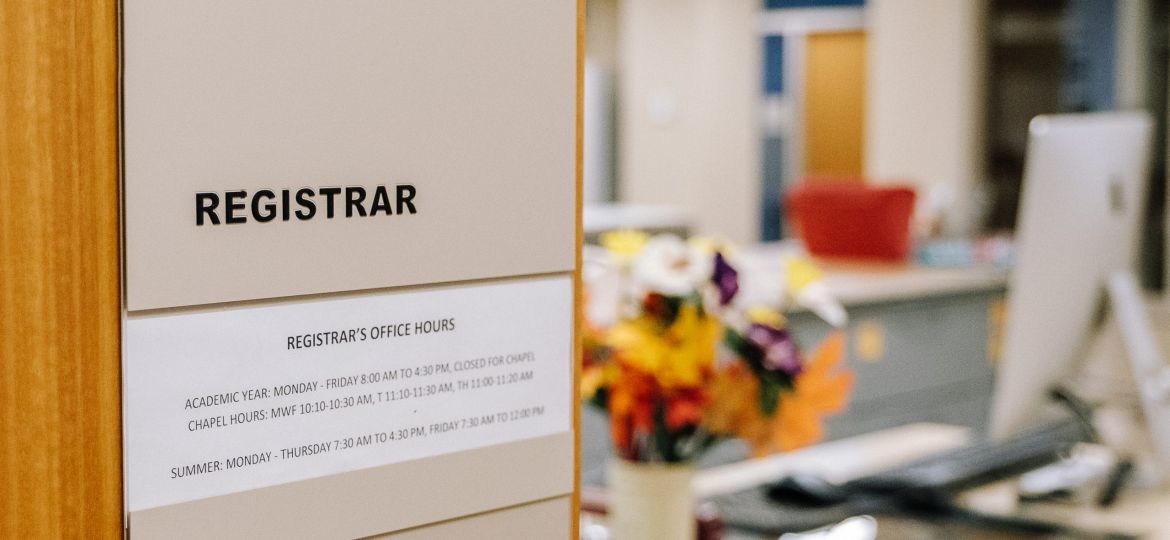
The College’s course registration process is completely changing, with a first-come-first-serve “live registration” system replacing the current process fall 2020. The overhaul is meant to make registration simpler and less stressful.
The new system will allow students to immediately add courses to their schedule, provided they are open, College Registrar Ericka Peterson said. Once a course is added, it will remain in the student’s schedule.
Other changes to Student Information System (SIS) will accompany the registration overhaul, such as the ability to add preferred gender pronouns and indicate proper name pronunciation.
Live registration
Peterson compared the updated live registration system to online shopping – students will simply add open courses as they would in-stock shopping items. However, once a course is full, students can no longer add that course to their schedules, just as one can’t purchase a sold-out item online. As such, students will need a ‘plan B’ course in case a class they need is filled by the time they register. Waitlists for individual courses will remain accessible as they have in the past.
Under the current system, students list courses they want in their schedule during registration. They get added to these courses after the registration period according to factors like their class year.
The Registrar’s Office hopes the new system makes registration less stressful and more equitable for students.
“We’re really trying hard to meet students where they are and make it smoother, simpler, easier,” Peterson said.
The Registrar’s Office and a team from IT have held meetings over the course of the last year to create the new system, which will be modeled after systems used at other universities. The incoming class of 2023 and students taking summer classes tested the new system over the summer. They offered no complaints and were all able to find classes, even if they might not have gotten their first-choice for every slot, Peterson said.
As part of the implementation process, the system underwent stress testing to ensure students will be able to register without the site crashing.
The live system will open for seniors the first day, juniors the second and underclassmen the third and fourth. Throughout the week, students will be able to adjust their schedule provided the courses they want to add are open, Peterson said.
Preferred pronouns and pronunciation in SIS
Along with the update to registration, students can now add their preferred gender pronouns to SIS and can soon indicate their name pronunciation.
These pronouns will appear to faculty on their class rosters, advisee lists and the online directory.
Working with the Taylor Center for Equity and Inclusion, these changes come at the request of faculty and students, Peterson said.
Previously, faculty would have the option to ask students to share their preferred pronouns in class. This was distressing for some.
“Expecting everyone to announce their pronouns can be uncomfortable for those that don’t want to share,” Hannah Timm ’22 said.
In giving students the option to indicate their pronouns on SIS, the College seeks to bring more visibility to using correct gender pronouns and prevent faculty and students from misgendering others, said Assistant Director for Gender and Sexuality Jon Mergens.
The registrar’s office hopes to add the name pronunciation tool in December. The new feature will allow students to record themselves saying their name and upload the audio to SIS.
“I would love the pronunciation tool so I could practice on my own without putting it on the students and requiring them to correct me,” said Associate Professor of English Rebecca Richards.
Some students and faculty feel that mispronunciation creates a barrier by putting pressure on students to constantly correct professors and defend a part of their identity.
“My heritage is lost when my name is mispronounced,” Regina Vera Estrada ’22 said. “My name is really relevant because its part of who I am.”
These two new additions will ensure SIS accurately represents and expresses student identities.
“We’re really trying hard to meet students where they are and make it smoother, simpler, easier.”
– College Registrar Ericka Peterson
“At their core, both of these changes are directly tied to important aspects of someone’s identity,” Mergens wrote in an email. “Our hope is that these new features in SIS will provide students, faculty and staff with more information to decrease mis-gendering and mispronunciation of names on campus.”
Problems with current system
The current registration system comes with an unnecessary amount of stress, chaos and anxiety, Peterson said. Students often spend the days-long registration period anxiously checking their “projected results” to see whether or not they will get into their favored classes. These results change as more students register.
“It’s really stressful because I’m watching the numbers. I’m being kicked out,” Abby Lund ’22 said. “Then I’m back in and there’s no way of knowing if I’ll ultimately end up in the classes.”
However, some students like the longer, more relaxed time frame, saying it’s more equitable. Unforeseen occurrences, such as failing internet or personal events, may prevent students from being able to register the first day, Lizzie Strauss ’22 said.
Beyond provoking anxiety, the current system has also failed to register some students for required courses.
During registration last spring, over 100 seniors who planned to graduate in May had one or more GEs left because of an inability to register for courses fulfilling those GEs, Peterson said.
However, some students and faculty see this issue as a consequence of current class offerings and substantial GE requirements rather than the registration process itself.
“I think that more forethought could go into the planning of courses, both relating to timing and number of course offerings,” Henry Henson ’20 said. “For students with STEM majors, a major problem is finding ways to register for General Education requirements while simultaneously signing up for labs.”

